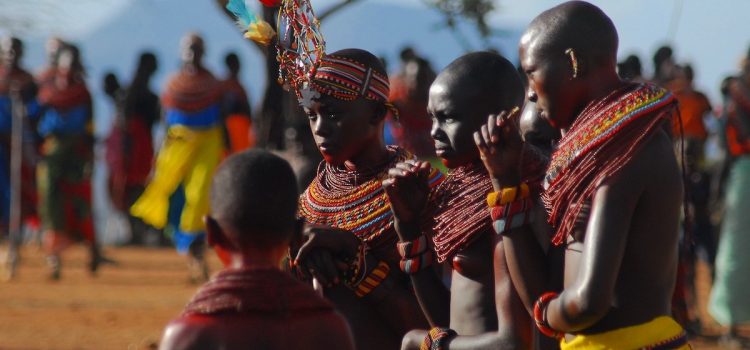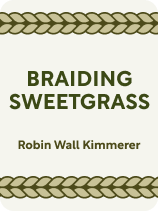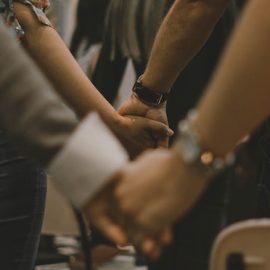

This article is an excerpt from the Shortform book guide to "Braiding Sweetgrass" by Robin Wall Kimmerer. Shortform has the world's best summaries and analyses of books you should be reading.
Like this article? Sign up for a free trial here.
How are Indigenous worldviews different than common, modern views? What does traditional Indigenous culture teach about mutual care?
Indigenous culture is a source of inspiration and knowledge for how to practice mutual care with other beings. In Braiding Sweetgrass, Robin Wall Kimmerer draws on three main areas of Indigenous culture that embody this concept: stories and language, honorable harvesting, and ceremony.
Learn more about these Indigenous worldviews that inspire loving care.
1. Stories and Language
Cultural lore and language conventions are Indigenous worldviews that embody mutual care by honoring the life of non-human beings and acknowledging our interdependence, particularly through the Windigo mythology and animate verbs and nouns.
The Windigo Mythology
Kimmerer tells the story of the Windigo, a mythical monster in Ojibwe culture who was turned from a man into a monster when his greed drove him to cannibalism. He was ostracized by the community and suffers eternally from insatiable hunger, growing more ravenous every time he eats.
The Windigo story warns against unconstrained consumption and demonstrates how this behavior is dangerous in a society based on shared resources. It cautions you to never let your greed get the best of you, even in times of scarcity.
(Shortform note: In addition to Indigenous communities, cultures worldwide use mythology and lore to discourage greedy behavior. For example, in Greek mythology, King Midas was granted his wish to be able to turn anything he touched into gold. Although he was thrilled at first by his new power, he soon regretted the unforeseen consequences. Since everything he touched turned to gold instantly, he was unable to eat or drink anything or lie down on a soft surface.)
Animate Verbs and Nouns
In addition to its instructive stories, the Potawatomi language teaches mutual care by using animate verbs and nouns for entities that are not made by a human. According to Kimmerer, this assigns agency and respect to things like plants, animals, and bodies of water, which are referred to as an inanimate “it” in English.
For example, having animate verbs means that the word “listen” is different in the context of listening to a bird call or a river, as opposed to listening to a truck engine. The bird call and the river are animate (alive or spirited), while the truck engine is not. Kimmerer explains how this grammar convention suggests that humans are not superior to plants, animals, and other natural entities, and thinking of others as kin in this way encourages mutual care.
There were only a handful of native speakers of Potawatomi alive when Braiding Sweetgrass was published, and Kimmerer explains that the decline of Potawatomi is significant specifically because of the way its grammar embodies the concept of mutual care. The loss of a language can lead to the loss of its cultural values, but Kimmerer also uses this as motivation to continue learning Potawatomi.
2. Honorable Harvesting
In addition to stories and language, the Indigenous worldview of honorable harvesting teaches us about mutual care by encouraging us to take care of natural resources. Kimmerer’s description of the Honorable Harvest includes guidelines for being considerate when harvesting wild fruits, medicinal plants, mushrooms, or other materials like bark and minerals.
(Shortform note: We synthesized the key ideas of the Honorable Harvest to make it straightforward to readers, but as Kimmerer notes, it is not a strict doctrine or understood as a set of rules in Indigenous communities. It is more of an intuitive understanding of how to be respectful and a set of habits learned from being immersed in a culture of mutual care.)
1. Take only what you need, never take the first or last, and never take more than half of whatever you’re harvesting. This ensures there’s enough for others.
2. “Ask” first. This could be a visual or logical assessment of whether the population is healthy enough to withstand some harvesting. It could also be a more spiritual or intuitive understanding of whether the plant or animal should be taken.
3. Give a gift in return. You could offer a gift to the plant you harvested by sowing its seeds or by putting compost under a tree that you harvested fruit from.
4. Use it well. Use the material well by making a useful tool or enjoying a meal, as opposed to letting it go to waste or storing it for no particular reason.
As an example, if you are looking for the medicinal plant comfrey to make a salve, you would never take the first one you spot, in case it’s the only plant in that region. After you leave the first one and find more of the plant nearby, the next step is to ask first: Is this species endangered by humans, habitat loss, or disease? Does the population seem healthy? In the case of comfrey, there’s likely an abundance of it, and it can even get too vigorous and start to take over.
The next step would be to harvest less than half of it and just enough to make the salve. Give a gift in return by replanting a root fragment in a new location. The harvested comfrey then benefits you, and the remaining comfrey will continue to thrive and benefit other living beings.
3. Ceremony
In addition to their language and harvesting practices, ceremony is another way Indigenous people hold their communities accountable for their values of gratitude and mutual care. Ceremonies accomplish this through outward expressions of gratitude (such as song and dance) and by incorporating practical ways of caring for living beings. This section looks at specific examples of these types of ceremonies.
The Thanksgiving Address
In the Onondaga Nation, the Thanksgiving Address is considered “The Words That Come Before All Else.” It is a lengthy declaration of gratitude for various elements of the natural world, such as water, medicinal plants, and the moon. By reciting the Thanksgiving Address regularly, the community reinforces gratitude as a top priority. When gratitude is prioritized, people are mobilized to act generously and support other beings in return.
(Shortform note: Kimmerer implies that ceremonies like the Thanksgiving Address have a direct impact on the gratitude people feel and the way they act toward other beings. Scientific research backs up this theory, including a study showing that the feeling of gratitude makes people more likely to help other people, including strangers.)
The Salmon Return Ceremony
Another ritual reinforcing this Indigenous worldview is a traditional ceremony performed in the Pacific Northwest to celebrate the annual return of salmon as they swim upriver to reproduce. This ceremony has the symbolic importance of honoring the salmon, an important food source in this region, and it also has practical components that keep the ecosystem thriving.
The ceremony involves days of feasting, dancing, and lighting coastal land on fire to guide the fish home. The fire keeps the land healthy by fertilizing it and stimulating the growth of medicinal plants and pasture for animals. As part of the ritual, the salmon are allowed to pass upriver without being harvested for three days. This ensures that the salmon population remains high, providing food security for the human community as well.
(Shortform note: The salmon ceremony went through a period of decline as a result of colonization, but Indigenous communities in the Pacific Northwest have revitalized it in recent decades and expanded its scope. There is now a Salmon Homecoming Alliance, a nonprofit organization that invites local families to participate in the celebration and also incorporates environmental educational programs.)

———End of Preview———
Like what you just read? Read the rest of the world's best book summary and analysis of Robin Wall Kimmerer's "Braiding Sweetgrass" at Shortform.
Here's what you'll find in our full Braiding Sweetgrass summary:
- What plants, Indigenous worldviews, and science can teach us about restoring balance
- Why we must recognize our interdependence on others and the environment
- Strategies to help you practice mutual care in your own life






